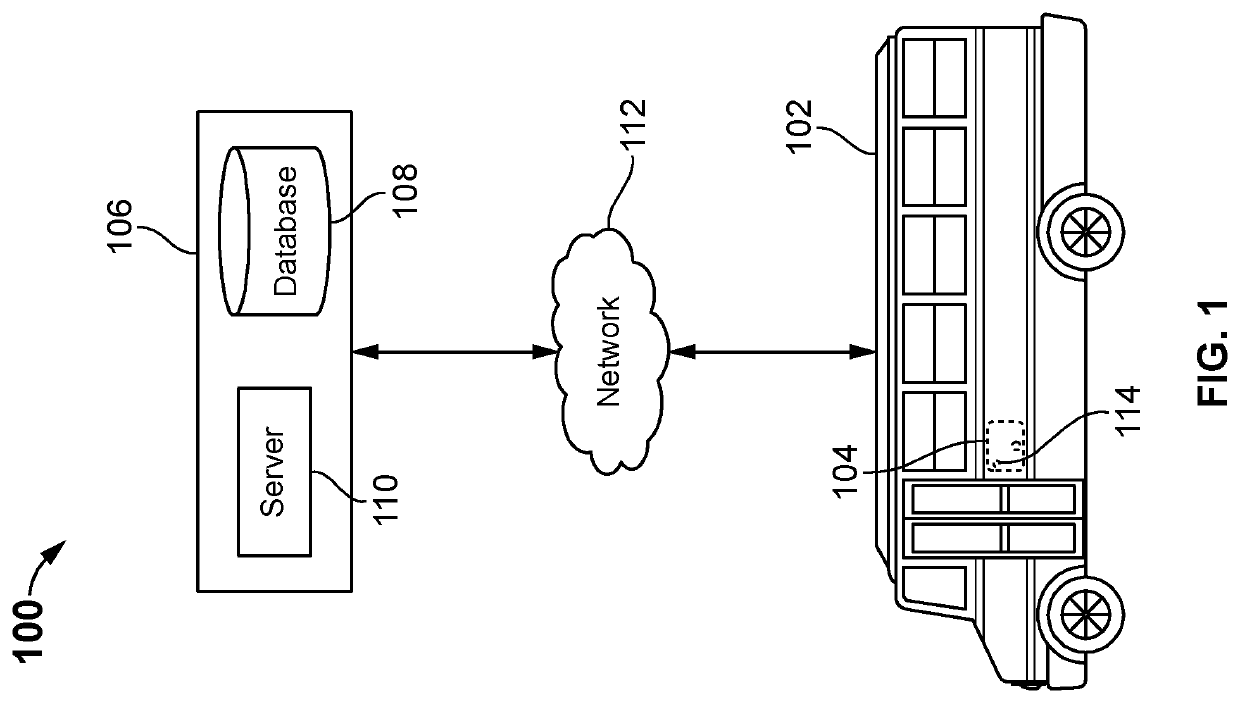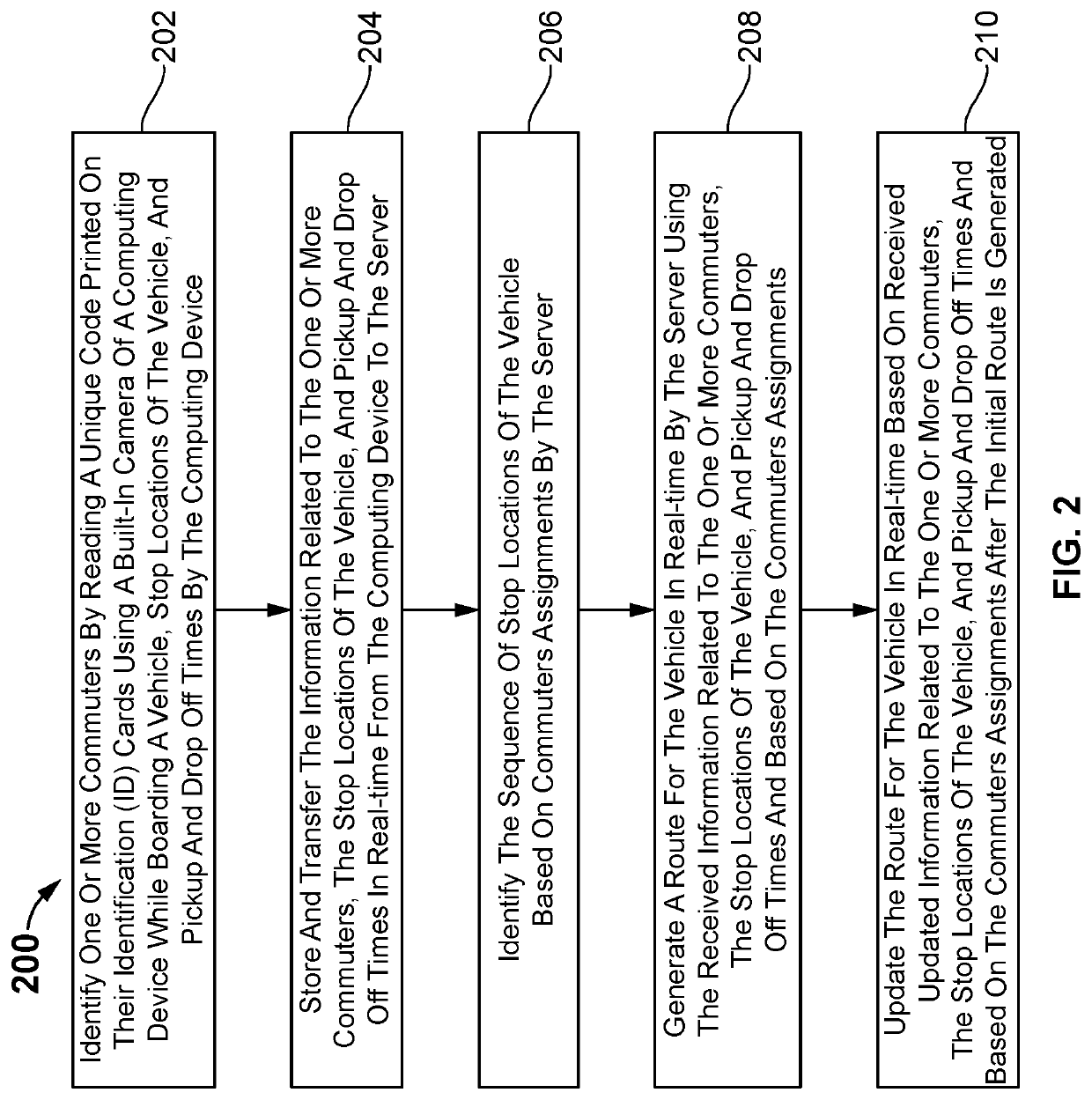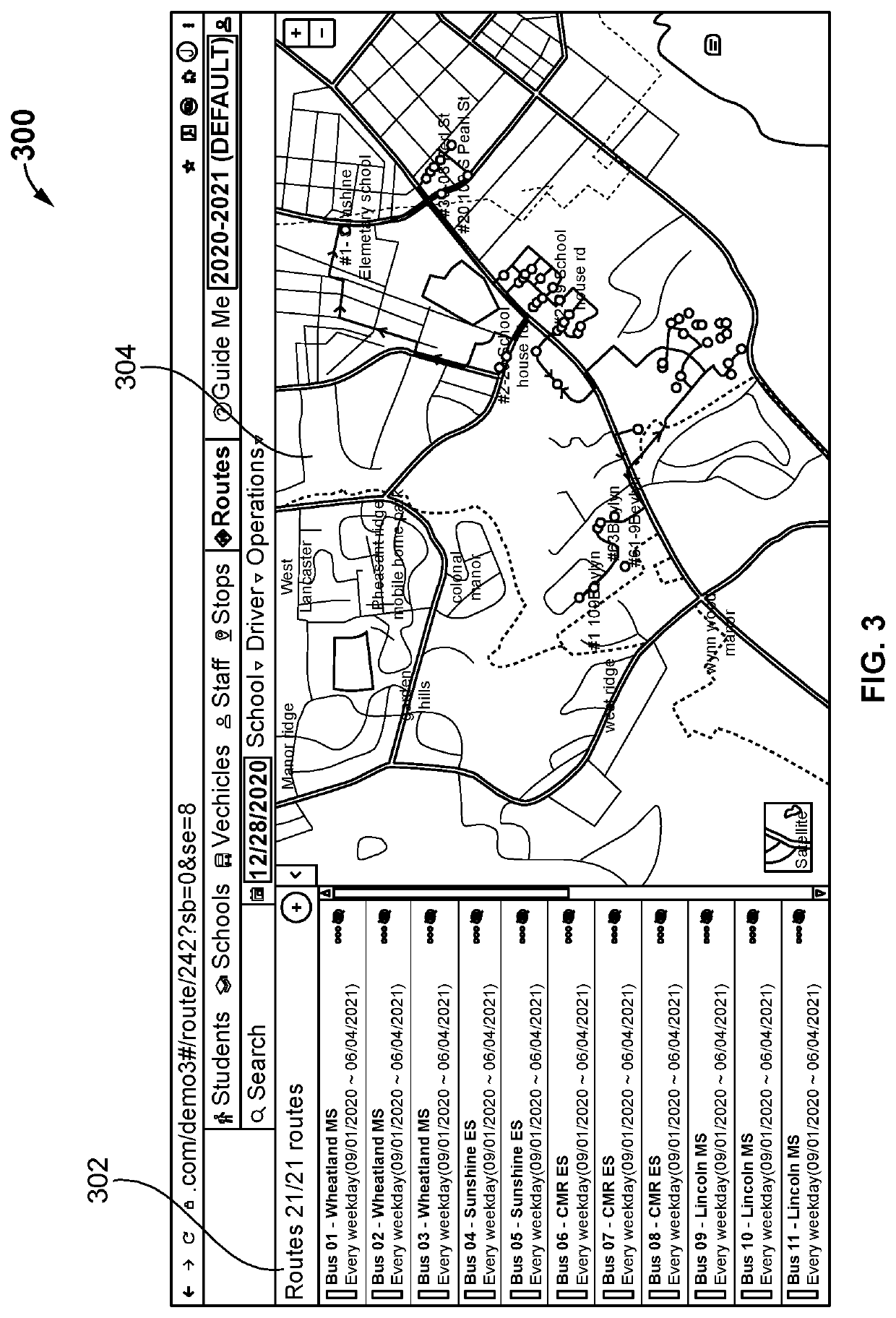System and Method for Creating School Bus Routes Based on Student Assignments
a school bus and assignment technology, applied in the field of system and method for creating school bus routes based on student assignments, can solve the problems of reducing the ability of drivers, unsafe conditions for students, and the school transportation system of today not always working as fast and reliably, so as to improve the safety of students, improve the efficiency of school bus routes, and accurately update the routes
- Summary
- Abstract
- Description
- Claims
- Application Information
AI Technical Summary
Benefits of technology
Problems solved by technology
Method used
Image
Examples
Embodiment Construction
[0037]The present invention generally relates to a transportation route creating method and system and more particularly relates to a system and method for efficiently creating school bus routes and accurately updating the route based on student assignments in real-time to provide more safety for the students and provides an exhilarating ride for the driver.
[0038]A description of embodiments of the present invention will now be given with reference to the figures. It is expected that the present invention may be embodied in other specific forms without departing from its spirit or essential characteristics. The described embodiments are to be considered in all respects only as illustrative and not restrictive. The scope of the invention is, therefore, indicated by the appended claims rather than by the foregoing description. All changes that come within the meaning and range of equivalency of the claims are to be embraced within their scope.
[0039]Referring to FIG. 1, a block diagram...
PUM
 Login to View More
Login to View More Abstract
Description
Claims
Application Information
 Login to View More
Login to View More - R&D
- Intellectual Property
- Life Sciences
- Materials
- Tech Scout
- Unparalleled Data Quality
- Higher Quality Content
- 60% Fewer Hallucinations
Browse by: Latest US Patents, China's latest patents, Technical Efficacy Thesaurus, Application Domain, Technology Topic, Popular Technical Reports.
© 2025 PatSnap. All rights reserved.Legal|Privacy policy|Modern Slavery Act Transparency Statement|Sitemap|About US| Contact US: help@patsnap.com



